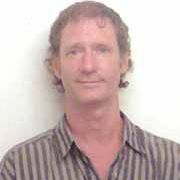Karl R Weiss
age ~63
from Lake Worth, FL
- Also known as:
-
- Karl R Wiess
- Matthew J Weiss
- Carl Weiss
- Karl S
Karl Weiss Phones & Addresses
- Lake Worth, FL
- 3830 Max Pl, Boynton Beach, FL 33436 • 561 364-7652
- 1702 Newhaven Point Ln, West Palm Bch, FL 33411 • 561 383-8563
- Greenacres, FL
- Sunrise, FL
- 4111 Edgewood Dr, Coconut Creek, FL 33066 • 954 974-0318
- Palm Beach, FL
- 6312 Long Key Ln, Boynton Beach, FL 33472 • 954 974-0318
Work
-
Position:Service Occupations
Education
-
Degree:Graduate or professional degree
Isbn (Books And Publications)
-
Wahrheit Und Wirklichkeit: Die Weg Aus Den Weltkriegen In Die Soziale Marktwirtschaft Und Eine Kunftige Weltordnung
view source -
Author:Karl Gunther Weiss
-
ISBN #:3924653194
-
The Little Book Of Bees
view source -
Author:Karl Weiss
-
ISBN #:0387952527
-
Bienen-Pathologie: Krankheiten, Schadlinge, Vergiftungen, Gesetzliche Regelungen Ein Lern- Und Arbeitsbuch
view source -
Author:Karl Weiss
-
ISBN #:3431025943
-
Zubringeeinrichtungen: Hilfsmittel Zur Planung Von Handhabungssystemen [Katalog]
view source -
Author:Karl Weiss
-
ISBN #:3783001420
-
Die Schweizerische Aktiengesellschaft: Ratgeber Fur Den Einsatz Der Ag Als Betriebs- Und Holding-Gesellschaft Nach Dem Neuen Aktienrecht
view source -
Author:Karl A. Weiss
-
ISBN #:3856840680
Name / Title
Company / Classification
Phones & Addresses
KALAG, LLC
Director
MX, INC
1 Financial Plz, Fort Lauderdale, FL 33394
4111 Edgewood Dr, Coconut Creek, FL
4111 Edgewood Dr, Coconut Creek, FL
Resumes

Karl Weiss
view sourceLocation:
Placerville, California
Industry:
Information Technology and Services

Karl Weiss
view sourcePosition:
Chairman of the Board at Massachusetts Technology Collaborative
Location:
United States
Work:
Massachusetts Technology Collaborative since 2000
Chairman of the Board
Chairman of the Board

Karl Weiss
view sourceLocation:
United States
Us Patents
-
Method And Apparatus For Adjusting The Power Of A Transmitter
view source -
US Patent:50036190, Mar 26, 1991
-
Filed:Jan 31, 1989
-
Appl. No.:7/304301
-
Inventors:James P. Morris - Sunrise FL
Karl R. Weiss - Sunrise FL
Jaime A. Borras - Hialeah FL -
Assignee:Motorola, Inc. - Schaumburg IL
-
International Classification:H04B 700
-
US Classification:455 69
-
Abstract:The initial transmission (108) from one subscriber to another subscriber is transmitted at full power. The receiving unit measures the received signal strength and returns a code (118) representing this value in a reply message (114), which is also transmitted at full power. The signal strength of the reply message is determined and may be sent to the replying subscriber unit in a subsequent transmission (122), which may now be accomplished at a reduced power level. Thereafter, both subscribers may modify their respective transmitter power levels during subsequent transmission to minimize battery consumption and maximize the operational life of the subscriber unit.
-
Variable Speaker Muting Based On Received Data
view source -
US Patent:51519224, Sep 29, 1992
-
Filed:Sep 24, 1990
-
Appl. No.:7/586667
-
Inventors:Karl R. Weiss - Sunrise FL
-
Assignee:Motorola, Inc. - Schaumburg IL
-
International Classification:H04L 2500
-
US Classification:375 5
-
Abstract:A method and an apparatus for controlling a speaker mute time is provided to transmit an information message from a first communication device to a second communication device. In response to receiving the information message, the second communication device controls the duration of its speaker mute time.
-
Virtual Data Source For A Radio Transceiver
view source -
US Patent:53813464, Jan 10, 1995
-
Filed:Jun 30, 1992
-
Appl. No.:7/906963
-
Inventors:Timothy A. Monahan-Mitchell - Deerfield Beach FL
Karl R. Weiss - Plantation FL -
Assignee:Motorola, Inc. - Schaumburg IL
-
International Classification:G06K 1116
-
US Classification:364514
-
Abstract:In a radio transceiver having a microcomputer (11) that controls various hardware-dependent components (220) and functions (240) that form a plurality of radio control processes, a method and apparatus for executing the radio control processes includes providing the microcomputer (11) with a plurality of virtual sources (272). The virtual sources (272) are for collecting and distributing data (440) generated by the hardware-dependent components (220) and functions (240) in the radio transceiver. A plurality of hardware-independent tasks (292, 392) for executing the radio control processes are also provided by the microcomputer. A distribution controlling interface standard (228) for controlling which hardware-independent task (292, 392) will receive from which virtual source (272) is further provided by the microcomputer (11).
-
Optimized Clock Recovery For An Msk System
view source -
US Patent:52746720, Dec 28, 1993
-
Filed:Oct 31, 1991
-
Appl. No.:7/785963
-
Inventors:Karl R. Weiss - Plantation FL
-
Assignee:Motorola, Inc. - Schaumburg IL
-
International Classification:H04L 2710
-
US Classification:375 47
-
Abstract:A clock recovery system for radio communication inserts a synchronization signal (102) at a frequency of 1/2 the baud rate, at the spectral null of an MSK data signal (108), which is also at 1/2 the baud rate, for later retrieval. Hence, in a transmitter-encoder (100), an MSK generator (106) generates an MSK digitally modulated data signal (108e) having a baud rate and a spectral null at 1/2 the baud rate. A synchronization clock generator (104) generates a synchronization signal (102e) having a frequency at 1/2 the baud rate. This frequency at 1/2 the baud rate corresponds to the spectral null of the MSK digitally modulated data signal (108e). A transmitter transmits the synchronization signal (102e), at the spectral null of the data signal (108e), together (112) with the MSK digitally modulated data signal (108e). On the other end, a receiver-decoder (200) recovers (214) the synchronization signal (102d) and demodulates (212) the MSK digitally modulated data signal (108d) as a function of the synchronization signal (102d).
-
Tone Decoder
view source -
US Patent:47696109, Sep 6, 1988
-
Filed:Jun 29, 1987
-
Appl. No.:7/067750
-
Inventors:Karl R. Weiss - Sunrise FL
-
Assignee:Motorola, Inc. - Schaumburg IL
-
International Classification:H03K 906
G06F 738 -
US Classification:328138
-
Abstract:This tone decoder utilizes three correlators for detecting the presence of a desired tone signal. A main correlator correlates to the desired tone frequency, while two side correlators are used to correlate to frequencies above and below the desired tone frequency. Tone detection is indicated by correlation of the main correlation and absence of correlation by the side correlators. Improved bandwidth and/or correlation time is achieved as compared to utilizing a single correlator.
-
Virtual Radio Interface And Radio Operating System For A Communication Device
view source -
US Patent:54902754, Feb 6, 1996
-
Filed:Feb 1, 1995
-
Appl. No.:8/383556
-
Inventors:Jerry L. Sandvos - Davie FL
Timothy A. Monahan-Mitchell - Deerfield Beach FL
Karl R. Weiss - Plantation FL -
Assignee:Motorola, Inc. - Schaumburg IL
-
International Classification:G06F 900
-
US Classification:395700
-
Abstract:A communication device (100) includes three levels and at least one feature and at least one protocol for communicating with other communication devices. The three levels are high level or user ergonomics (302), common level or feature/protocol (310), and low level or hardware platform (318). The feature/protocol level (310) is adapted for controlling the at least one feature and the at least one protocol. The user ergonomics (302) includes a first interface (304) coupled to the feature/protocol level (310) for allowing the user ergonomics level (302) to change without affecting the feature/protocol level (310). The, hardware platform (318) includes a second interface coupled to the feature/protocol level (310) for allowing the hardware platform (318) to change without affecting the feature/protocol level (310) or the user ergonomics level (302).
-
Method Of Communications Between And Within Virtual Radio Interface Standard Layers
view source -
US Patent:53633156, Nov 8, 1994
-
Filed:Jun 30, 1992
-
Appl. No.:7/906990
-
Inventors:Karl R. Weiss - Plantation FL
Karen J. Ensor - Plantation FL
Marc S. Desruisseaux - Plantation FL
Sanjay Wanchoo - Lauderhill FL
Jerry L. Sandvos - Davie FL
Timothy A. Monahan-Mitchell - Deerfield Beach FL -
Assignee:Motorola, Inc. - Schaumburg IL
-
International Classification:G08C 1700
-
US Classification:364514
-
Abstract:In radio processing control (11), a plurality of architectural layers (270, 290, 390) separate at least one of a plurality of tasks (272) from another task (292). For communicating among the tasks within (274, 276, 278) or across (229, 239) the layers, a buffer (300) for each of the tasks is provided by a communication resource (602). A messaging protocol for passing information from the tasks is defined to be a predefined information packet having a header (700) preceding any optional data. A flag portion (701) of the header designates the information as intralayer or interlayer. If the information is interlayer (229, 239), an identifier portion (703, 704) of the header identifies the source (272) of the information and an operation portion (702) identifies an operation code.

Karl Weiss
view source
Karl Edmund Weiss
view source
Karl Weiss
view source
Karl Weiss
view source
Karl Weiss
view source
Karl Weiss
view source
Karl Weiss
view source
Karl Weiss
view sourceMyspace

Karl Weiss
view sourceFlickr
Plaxo

Karl Weiss
view sourceSloughhouse, CA
Classmates

Karl Weiss
view sourceSchools:
St. Philip the Apostle School Clifton NJ 1999-2002
Community:
John Wisniewski, David Haar, Geoffrey Jones, Cormac Tully, Ellen Weglarz

Karl Weiss
view sourceSchools:
University of Manitoba Winnipeg Palestinian Territory, Occupie 1954-1958
Community:
Brian Carrol, Wayne Chezick, Len Penner

Karl Weiss
view sourceSchools:
St. Anthony's School Drayton Valley Azores 1984-1997, Maddock High School Drayton Valley Azores 1997-2002
Community:
Doug Hennessey, Rob Sired, Keith Redford, Gail Hull

Karl Weiss
view sourceSchools:
Gold Coast Christian High School Ft. Lauderdale FL 1975-1979
Community:
Darrell Wright, George Bain, Rich Gould, Joyce Cerone, William Grissett

St. Philip the Apostle Sc...
view sourceGraduates:
Maryann Pannullo (1977-1979),
Steven Kochik (1993-1998),
Kristy Holzli (1980-1990),
Peter Laskowich (1957-1966),
Karl Weiss (1999-2002)
Steven Kochik (1993-1998),
Kristy Holzli (1980-1990),
Peter Laskowich (1957-1966),
Karl Weiss (1999-2002)

William Allen High School...
view sourceGraduates:
Karl Weiss (1978-1982),
Natalie Edwards (1993-1997),
Stephen Budihas (1980-1984),
Frank Lukitsch (1999-2003),
Bonita Joyner (2003-2007),
Leo Stickland (1992-1996)
Natalie Edwards (1993-1997),
Stephen Budihas (1980-1984),
Frank Lukitsch (1999-2003),
Bonita Joyner (2003-2007),
Leo Stickland (1992-1996)

St. Anthony's School, Dra...
view sourceGraduates:
Tammy Bauman (1975-1980),
Karl Weiss (1984-1997),
Jenna Sommerville (1992-1999),
Everett Thesen (1989-2000)
Karl Weiss (1984-1997),
Jenna Sommerville (1992-1999),
Everett Thesen (1989-2000)

Gold Coast Christian High...
view sourceGraduates:
Elizabeth Ruffing (1978-1982),
Barbara Mansour (1975-1979),
Suzanne Williams (1979-1983),
Karl Weiss (1975-1979),
Kenneth Guldstrand (1973-1977)
Barbara Mansour (1975-1979),
Suzanne Williams (1979-1983),
Karl Weiss (1975-1979),
Kenneth Guldstrand (1973-1977)
Googleplus

Karl Weiss

Karl Weiss

Karl Weiss

Karl Weiss

Karl Weiss

Karl Weiss

Karl Weiss

Karl Weiss
Youtube
News

Quebec towns near U.S. border alerted as Vermont faces mosquito-borne illness threat
view source- Dr. Karl Weiss, chief of infectious diseases at the Jewish General Hospital, said themajority of people infected do not develop symptoms, or if they do, the symptoms aren't significant enough to seek medical consultation. Even then, doctors may not test for the virus, he added.
- Date: Aug 30, 2024
- Category: Health
- Source: Google
Get Report for Karl R Weiss from Lake Worth, FL, age ~63













